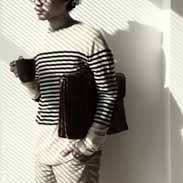Design Flashcards, test questions and answers
Discover flashcards, test exam answers, and assignments to help you learn more about Design and other subjects. Don’t miss the chance to use them for more effective college education. Use our database of questions and answers on Design and get quick solutions for your test.
What is Design?
Design thinking is a powerful problem-solving process used by designers to create innovative solutions. It involves an iterative approach that focuses on understanding user needs, exploring possible solutions, and testing prototypes with users. Design thinking can be applied in any field – from business to engineering – and can help teams generate creative ideas and solve complex problems.The design thinking process consists of five steps: empathize, define, ideate, prototype, and test. Each step serves a distinct purpose within the overall process: Empathize: Understand who you are designing for. Take time to observe people using your product or service in order to gain insight into their motivations and pain points. This helps ensure that you are creating something tailored for them rather than what you assume they need. Define: Identify the challenge or opportunity at hand so that it can be addressed effectively with a solution. Be sure to keep the focus narrow enough so that it’s possible to come up with practical ideas during brainstorming sessions later on in the process. Ideate: Brainstorm possible solutions through activities such as idea mapping or free writing exercises designed to explore numerous possibilities without external judgement or criticism coming into play too soon in the process. Prototype: Create tangible representations of potential solutions by mock-ups or storyboarding scenarios which bring ideas out of abstract thought bubbles into physical forms (or digital simulations). Prototypes are crucial for identifying any flaws early on when there is still time left for fixing them before launching the finished product/service/experience etc.. Test & Refine: Share prototypes with users and get feedback from them while tweaking elements based on their input until an optimal version has been reached that meets all requirements set forth earlier on in this looping cycle of design iteration…and then rinse & repeat. By following these five steps over multiple cycles, teams can use design thinking methods to uncover insights about how their products should work leading ultimately towards more successful outcomes than would have been achieved had traditional approaches been taken instead.

























